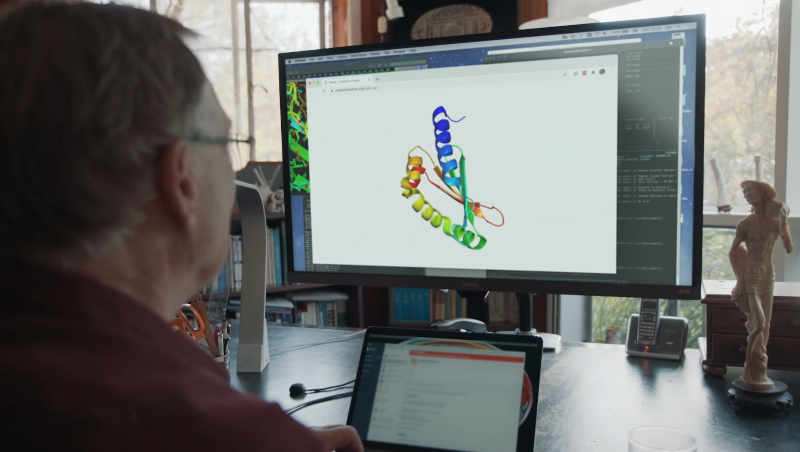By Richard N. Fogoros, MD
Updated on August 27, 2023
Medically reviewed by Yasmine S. Ali, MD, MSCI
SEBASTIAN KAULITZKI / Getty Images
A silent heart attack—also known as a silent or unrecognized myocardial infarction—happens when a heart attack has few, if any, symptoms that are readily recognized as a heart attack.1
In some cases, a person may experience indigestion and nausea without classic heart attack symptoms like chest pain or shortness of breath. This can lead to delays in treatment as the obstruction of blood flow causes damage to the heart.
A silent heart attack is more common than many people think, accounting for around 107,000 of the estimated 805,000 heart attacks in the United States each year.2
This article describes the symptoms and characteristics of a silent heart attack and explores some of the reasons why a heart attack may go recognized. It also explains how a silent heart attack is diagnosed and treated and what the likely outcome will be if you have one.
Gender Definitions
For the purpose of this article, "female" refers to people born with vaginas and "male" refers to people born with penises irrespective of the gender or genders they identify with. The gender terms used in this article reflect those used in the cited sources.
What Are the Symptoms of a Silent Heart Attack?
Most people who have a heart attack know immediately that something is wrong. They will typically experience angina (chest pain) and crushing chest pressure along with unmistakable signs such as cold sweat, rapid heartbeats, nausea, vomiting, lightheadedness, and radiating pain to the shoulder, neck, back, arm, or jaw.3
With a silent heart attack, many or all of these symptoms may be missing or so mild that they are mistaken for some other condition, like heartburn. This is especially true in younger people who don't consider themselves to be candidates for a heart attack.1
Silent heart attacks are characterized by the absence rather than the presence of symptoms, most notably chest pain.4 This typically leads to delayed diagnoses, in some cases days, weeks, months, or even years later.
Can You Have a Heart Attack and Not Know It?
According to a long-term study published in the Journal of the American Medical Association, 8% of participants with no prior history of heart disease showed signs of myocardial scarring, meaning that they had a heart attack sometime during the 10-year study period and didn't know it.5
Cardiac Arrest vs. Heart Attack: Main Differences
Complications
In some cases, a silent heart attack will cause minimal damage or the heart will be able to revascularize itself—essentially performing its own bypass.
But this doesn't mean that a silent heart attack is any less serious than a regular one. As with a regular heart attack, a silent heart attack can cause irreparable damage to the heart, resulting in short- and long-term complications like:
Heart failure: This is the inability of the heart to pump enough blood to service the body's needs. A 2018 study found that a silent heart attack increases the risk of heart failure by 35% irrespective of its severity.4
Ischemic stroke: This is a type of stroke caused by the blockage of blood flow to the brain. According to a 2021 study in the journal Neurology, having a silent stroke increases the risk of an ischemic stroke by 51%.6
Sudden cardiac arrest: This is when the heart suddenly stops, leading to death. According to a 2019 study involving 3,299 people who died of sudden cardiac death with no prior history of heart disease, 42% had heart damage consistent with a silent heart attack.7
What Are the Signs and Symptoms of a Heart Attack?
Causes of Silent Heart Attacks
The underlying cause of a silent heart attack is no different than a regular one. It usually occurs when the buildup of plaque in a coronary artery spontaneously ruptures. The rupture causes a blood clot to form which blocks the artery. Unless the blockage is cleared, that section of the heart muscle will die.
When this happens, around one in eight cases will be asymptomatic (without symptoms) or subclinical (without notable symptoms).2
There are a number of reasons why this might occur:
Differences in symptoms by sex: Compared to men, women who have a heart attack are more likely to have atypical symptoms like fatigue, nausea, vomiting, and shortness of breath without any notable chest, arm, or jaw pain.8
Differences in pain thresholds: Some people simply have higher pain thresholds and may not regard their symptoms as worrisome.1 A 2016 study found a link between unrecognized heart attacks and higher pain thresholds in women.9
Effects of chronic disease: Certain medical conditions, especially diabetes and chronic kidney disease, can damage nerves that carry pain signals, effectively "muting" symptoms of angina.10
Silent Heart Attacks in Males and Females
While men are more likely than women to have a silent heart attack (for the same reason that they are more likely to have a regular heart attack), women are more likely to die due to differences in how they experience the event.11
Mini Heart Attack: Don’t Doubt Yourself With Suspected Symptoms
Risk Factors for Silent Heart Attack
According to research, there are three key factors that independently increase the risk of a silent heart attack:
Male sex: Men are roughly 1.7 times more likely to have a silent heart attack than women.11
Type 2 diabetes: The risk of a silent heart attack in people with type 2 diabetes is more than eight times greater than in people without diabetes.10
End-stage renal disease: People with advanced chronic kidney disease on dialysis are not only at high risk of a heart attack but are more likely than not to have a silent heart attack.12
Other risk factors—like smoking, obesity, high blood pressure, high cholesterol, and a family history of heart disease—contribute to the risk of a silent heart attack in the same way that they contribute to a regular heart attack.1
How to Prevent a Heart Attack
Diagnosis
Because a silent heart attack isn't recognized as it's happening, the diagnosis is usually made after the damage has been done.
Oftentimes, the damage is found weeks or months later when a person seeks treatment for symptoms they can't explain, like fatigue, shortness of breath, irregular heartbeat, or swelling of the legs, ankles, or feet.
In such cases, the healthcare provider will usually order a test called an electrocardiogram (ECG). An ECG can usually detect signs of heart damage based on changes in the electrical pattern of a heartbeat.13
The suspicions can usually be confirmed with an echocardiogram. This is an imaging test that visualizes the heart muscle and coronary arteries using reflected sound waves. If there has been a silent heart attack, there will be signs of arterial blockage and abnormal blood flow.13
Other forms of diagnostic imaging, such as a nuclear stress test, cardiac magnetic resonance imaging (MRI), or cardiac computerized tomography (CT), can detect which part of the heart is not receiving its normal blood supply.14
How a Heart Attack Is Diagnosed
Treatment
If you have had a silent heart attack, you would receive the same general treatment as someone with a regular heart attack.
With that said, the treatment approach can differ dramatically based on whether the attack occurred recently or happened months or years ago.1
Treatment options may include:15
Beta-blockers: These are medications that can prevent further arterial blockage (ischemia).
Thrombolytics: These drugs help break up blood clots during an active heart attack.
ACE inhibitors: These drugs lower blood pressure, reducing stress on the heart.
Statins: These drugs help lower cholesterol which contributes to the formation of plaques.
Coronary angioplasty and stenting: This minimally invasive surgery accesses the arterial blockage through a vein so that it can be widened and supported with a stent.
Cardiac bypass surgery: This is an open-heart surgery that takes a blood vessel from another part of the body to create a new path for blood in the heart.
How a Heart Attack Is Treated
Prognosis
The prognosis for a silent heart attack can vary, with some people experiencing long-term health concerns and others experiencing few notable issues. Even so, having a silent heart attack generally increases the risk of heart failure, stroke, and a second, potentially fatal heart attack.16
Because of their delayed diagnosis, people with a silent heart attack tend to have worse long-term outcomes than those with a regular heart attack.
According to a 2021 study published in the Journal of the American Medical Association, a silent heart attack is associated with a three-fold increased risk of sudden cardiac death.14
Preventing Sudden Death After a Heart Attack
Summary
A silent heart attack is one that occurs without notable symptoms or has symptoms that are mistaken for other conditions. Because of the delayed diagnosis, people often have worse long-term outcomes, including an increased risk of heart failure, stroke, and sudden death.
Research suggests that one of every eight heart attacks is silent. Males, people with type 2 diabetes, and people with advanced chronic kidney disease are at greatest risk. Although females are less likely than males to have a silent heart attack, they are more likely to die from it.







Post comments